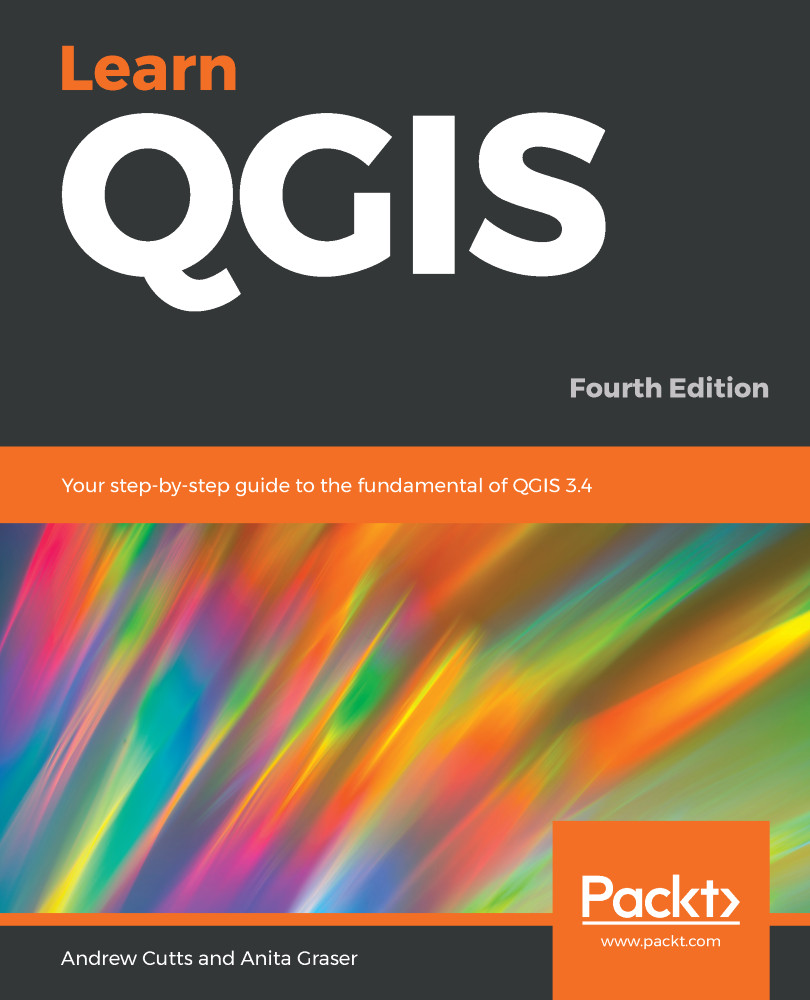In this chapter, we will use QGIS to perform many typical spatial analysis tasks. We will start with raster processing, using tools such as clipping and terrain analysis. We will also cover the essentials of converting between raster and vector formats. We will then continue with common vector processing tasks, such as generating heatmaps and calculating area shares within a region. We use the new Processing toolbox as well as the modeler to begin to build automated processing workflows.
Topics covered in this chapter include the following:
- Processing toolbox
- Analyzing raster data
- Converting between raster and vector
- Raster and vector statistics
- Heatmap from points
- Advanced raster and vector processing
- Batch processing
- Graphical modeler


